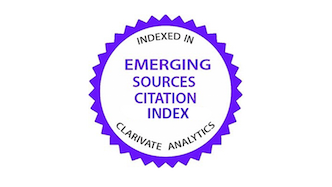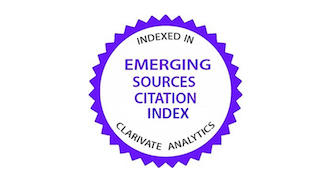Use of plant densities and a microbial consortium for sustainable sunflower production
DOI:
https://doi.org/10.15517/f9zbrr64Keywords:
biostimulants, sowing density, Helianthus annuus, benefic microorganisms, yieldAbstract
Introduction. The use of microbial consortia (CM) combined with adequate plant densities (DP) can be a viable and friendly alternative to increase sustainable sunflower (Helianthus annuus L.) production. Objective. To determine the individual and combined effects of microbial consortia and plant densities on sunflower growth and yield under water-deficit conditions. Materials and methods. The study was conducted between January and May 2024 in Sancti Spíritus, Cuba. Under field conditions, an experiment was established using a split-plot arrangement in a randomized block design with three replications. The main plots consisted of two DP (20,000 and 40,000 plants/ha), and the secondary plots of three CM concentrations (0, 100, and 200 mL m-2). Results. Individually, DP and CM directly influenced sunflower growth and yield. The DP of 40,000 plants/ha favored plant height, leaf area index, percent of full seeds, seed mass per head, and yield. The DP of 20,000 plants/ha increased leaf area, chlorophyll content, head diameter, and total and full seed per head. The concentrations of 100 mL m-2 of CM stimulated plant growth and yield in both densities compared to the treatments without CM and with 200 mL m-2 of CM. Conclusions. The combination of a density of 40,000 plants/ha and inoculation with 100 mL m-2 of CM could be considered a local, viable, important, and friendly strategy to increase sustainable sunflower production under low-rainfall conditions.
Downloads
References
Aher, S. B., Lakaria, B. L., Kaleshananda, S., & Singh, A. B. (2022). Concentration and Uptake of Micronutrients (Fe, Zn, Cu and Mn) in Soybean and Wheat under Organic, Biodynamic and Inorganic Nutrient Management in Semi-arid Tropical Conditions of Central India. Communications in Soil Science and Plant Analysis, 53(17), 2229-2244. https://doi.org/10.1080/00103624.2022.2071434
Andrade, J. F., Ermacora, M., De Grazia, J., Rodríguez, H., Mc Grech, E., & Satorre, E. H. (2023). Soybean seed yield and protein response to crop rotation and fertilization strategies in previous seasons. European Journal of Agronomy, 149, Article 126915. https://doi.org/10.1016/j.eja.2023.126915
Andriienko, O., Vasylkovska, K., Andriienko, A., Vasylkovskyi, O., Mostipan, M., & Salo, L. (2020). Response of sunflower hybrids to crop density in the steppe of Ukraine. Helia, 43(72), 99-111. https://doi.org/10.1515/helia-2020-0011
Bartucca, M. L., Cerri, M., Del Buono, D., & Forni, C. (2022). Use of biostimulants as a new approach for the improvement of phytoremediation performance—A review. Plants, 11(15), Article 1946. https://doi.org/10.3390/plants11151946
Behera, B., Das, T. K., Raj, R., Ghosh, S., Raza, Md. B., & Sen, S. (2021). Microbial consortia for sustaining productivity of non-legume crops: prospects and challenges. Agricultural Research, 10, 1-14. https://doi.org/10.1007/s40003-020-00482-3
Calero Hurtado, A., Olivera Viciedo, D., Pérez Díaz, Y., González-Pardo Hurtado, Y., Yánez Simón, L. A., & Peña Calzada, K. (2020). Manejo de diferentes densidades de plantación y aplicación de microorganismos eficientes incrementan la productividad del arroz. Idesia (Arica), 38(2), 109-117. https://doi.org/10.4067/S0718-34292020000200109
Calero Hurtado, A., Peña Calzada, K., Fasoli, J. V. B., Jiménez, J., & Sánchez López, L. (2025). Synergic effects of the microbial consortium and amino acid-based growth promoter in sunflower productivity under water-deficit conditions. Water, 17(9), Article 1365. https://doi.org/10.3390/w17091365
Calero Hurtado, A., Pérez Díaz, Y., Peña Calzada, K., Olivera Viciedo, D., Jiménez Hernández, J., & Carabeo Pérez, A. (2023). Coinoculación de biofertilizantes microbianos en pepino y habichuela y su efecto en el crecimiento y rendimiento. Temas Agrarios, 28(2), 220-232. https://doi.org/10.21897/bz3pzk58
Calero-Hurtado, A., Pérez-Díaz, Y., Hernández-González, L., García-Guardarrama, Y., Pacheco-Méndez, S. M., Rodríguez-Pérez, Y., & Castro-Lizazo, I. (2023). Coaplicación entre el consorcio microorganismos eficientes y Biobras-16® aumentan el crecimiento y la productividad del frijol común. Revista de la Facultad de Ciencias, 12, 64-79. https://doi.org/10.15446/rev.fac.cienc.v12n2.107055
Calero-Hurtado, A., Pérez-Díaz, Y., Rodríguez-Lorenzo, M., & Rodríguez-González, V. (2022). Aplicación conjunta del consorcio microorganismos benéficos y FitoMas-E® incrementan los indicadores agronómicos del frijol. Revista U.D.C.A Actualidad & Divulgación Científica, 25(1), Artículo e2252. https://doi.org/10.31910/rudca.v25.n1.2022.2252
Carabeo, A., Jiménez, J., Gil, Z., Henderson, D., Adams, P., & Calero-Hurtado, A. (2022). Taxonomic identification and diversity of effective soil microorganisms: towards a better understanding of this microbiome. Agronomía Colombiana, 40, 278-292. https://doi.org/10.15446/agron.colomb.v40n2.101378
Carciochi, W. D., Schwalbert, R., Andrade, F. H., Corassa, G. M., Carter, P., Gaspar, A. P., Schmidt, J., & Ciampitti, I. A. (2019). Soybean seed yield response to plant density by yield environment in North America. Agronomy Journal, 111(4), 1923-1932. https://doi.org/10.2134/agronj2018.10.0635
Castillo, P., Escalante, M., Gallardo, M., Alemano, S., & Abdala, G. (2013). Effects of bacterial single inoculation and co-inoculation on growth and phytohormone production of sunflower seedlings under water stress. Acta Physiologiae Plantarum, 35, 2299-2309. https://doi.org/10.1007/s11738-013-1267-0
Criollo, H., & García, J. (2011). Efecto de la densidad de siembra sobre el crecimiento de plantas de rábano (Raphanus sativus L.) bajo invernadero. Revista Colombiana de Ciencias Hortícolas, 3, 210-222. https://doi.org/10.17584/rcch.2009v3i2.1214
Dai, Y., Fan, J., Liao, Z., Zhang, C., Yu, J., Feng, H., Zhang, F., & Li, Z. (2022). Supplemental irrigation and modified plant density improved photosynthesis, grain yield and water productivity of winter wheat under ridge-furrow mulching. Agricultural Water Management, 274, Article 107985. https://doi.org/10.1016/j.agwat.2022.107985
De la Vega, A. J., & Hall, A. J. (2002). Effects of planting date, genotype, and their interactions on sunflower yield. Crop Science, 42(4), 1191-1201. https://doi.org/10.2135/cropsci2002.1191
Devi, R., Kaur, T., Kour, D., & Yadav, A. N. (2022). Microbial consortium of mineral solubilizing and nitrogen fixing bacteria for plant growth promotion of amaranth (Amaranthus hypochondrius L.). Biocatalysis and Agricultural Biotechnology, 43, Article 102404. https://doi.org/10.1016/j.bcab.2022.102404
Echarte, L., Echarte, M. M., Cerrudo, D., Gonzalez, V. H., Alfonso, C., Cambareri, M., Hernandez, M. D., Nagore, M. L., & Maggiora, A. D. (2020). Sunflower evapotranspiration and water use efficiency in response to plant density. Crop Science, 60(1), 357-366. https://doi.org/10.1002/csc2.20001
Etesami, H. (2020). Enhanced phosphorus fertilizer use efficiency with microorganisms. En R. S. Meena (Ed.), Nutrient Dynamics for Sustainable Crop Production (pp. 215-245). Springer. https://doi.org/10.1007/978-981-13-8660-2_8
Food and Agriculture Organization of the United Nations. (n. d.). FAOSTAT Statistical Database. Recuperado el 23 de marzo de 2025 de https://www.fao.org/faostat/en/#data
Friedman, S. P. (2024). Relationships between combined and individual field crops’ biomass and planting density. Field Crops Research, 305, Article 109188. https://doi.org/10.1016/j.fcr.2023.109188
Gamboa-Angulo, J., Ruíz-Sánchez, E., Alvarado-López, C., Gutiérrez-Miceli, F., Ruíz-Valdiviezo, V. M., & Medina-Dzul, K. (2020). Efecto de biofertilizantes microbianos en las características agronómicas de la planta y calidad del fruto del chile xcat´ik (Capsicum annuum L.). Terra Latinoamericana, 38(4), 817-826. https://doi.org/10.28940/terra.v38i4.716
Ghadirnezhad Shiade, S. R., Fathi, A., Taghavi Ghasemkheili, F., Amiri, E., & Pessarakli, M. (2023). Plants’ responses under drought stress conditions: effects of strategic management approaches—a review. Journal of Plant Nutrition, 46(9), 2198-2230. https://doi.org/10.1080/01904167.2022.2105720
Ghaffari, M., Gholizadeh, A., Rauf, S., & Shariati, F. (2023). Drought-stress induced changes of fatty acid composition affecting sunflower grain yield and oil quality. Food Science & Nutrition, 11(12), 7718-7731. https://doi.org/10.1002/fsn3.3690
Gómez Ariza, M., Ordóñez Fernández, R., Sánchez Ruiz, F., & Gómez Ariza, R. (2022). Girasol en siembra directa. Estrategias de fertilización con microcomplejos y bioestimulantes. Agricultura de Conservación, 50, 8-14. https://agriculturadeconservacion.org/wp-content/uploads/2023/12/revista50web_baja.pdf
González, Y. A., Díaz, Y. P., Hurtado, A. C., & Calzada, K. P. (2025). Plant densities and fertilizers improving sustainable peanut production. Revista de la Facultad de Ciencias, 14, 23-38. https://doi.org/10.15446/rev.fac.cienc.v14n1.113747
Granda-Mora, K., Correa-Ullauri, C., Collahuazo-Reinos, Y., & Robles-Carrión, Á. (2024). Inoculantes microbianos comerciales con PGPR sobre variables productivas y económicas de fríjol común (Phaseolus vulgaris L.). Agronomía Mesoamericana, 35, 55654-55654. https://doi.org/10.15517/am.2024.55654
Gürsoy, M. (2022). Role of biostimulant priming applications on germination, growth and chlorophyll content of sunflower (Helianthus annuus L.) cultivars under salinity stress. Selcuk Journal of Agriculture and Food Sciences, 36(1), 75-81. https://dergipark.org.tr/en/pub/selcukjafsci/issue/76375/1275165
Hernández-Jiménez, A., Pérez-Jiménez, J. M., Bosch-Infante, D., & Castro Speck, N. (2019). La clasificación de suelos de Cuba: énfasis en la versión de 2015. Cultivos Tropicales, 40(1), Artículo a15-e15. https://ediciones.inca.edu.cu/index.php/ediciones/article/view/1504
Ibrahim, B. A., Eldey, E. M., Ishag, A. A., & Naim, A. M. E. (2023). Response of sunflower (Helianthus Annuus L) to plant spacing. Innovation in Science and Technology, 2(2), 32-37. https://www.paradigmpress.org/ist/article/view/541
International Union of Soil Sciences. (2022). World reference base for soil resources. International soil classification system for naming soils and creating legends for soil maps (4th ed.). https://www.isric.org/sites/default/files/WRB_fourth_edition_2022-12-18.pdf
Kapadia, C., Sayyed, R. Z., El Enshasy, H. A., Vaidya, H., Sharma, D., Patel, N., Malek, R. A., Syed, A., Elgorban, A. M., Ahmad, K., & Zuan, A. T. K. (2021). Halotolerant microbial consortia for sustainable mitigation of salinity stress, growth promotion, and mineral uptake in tomato plants and soil nutrient enrichment. Sustainability, 13(15), Article 8369. https://doi.org/10.3390/su13158369
Kemp, C. D. (1960). Methods of estimating the leaf area of grasses from linear measurements. Annals of Botany, 24(4), 491-499. https://doi.org/10.1093/oxfordjournals.aob.a083723
Khademian, R., Asghari, B., Sedaghati, B., & Yaghoubian, Y. (2019). Plant beneficial rhizospheric microorganisms (PBRMs) mitigate deleterious effects of salinity in sesame (Sesamum indicum L.): physio-biochemical properties, fatty acids composition and secondary metabolites content. Industrial Crops and Products, 136, 129-139. https://doi.org/10.1016/j.indcrop.2019.05.002
Leiva Rodríguez, L., García de la Osa, J., & Delgado Rigo, M. (2018). Efecto de diferentes densidades de siembra sobre el rendimiento del cultivo del girasol (Helianthus annuus L.), var. Caburé – 15 en suelos arroceros. InfoCiencia, 22(1), 63-72. http://www.infocienciass.cu/index.php/infociencia/article/view/419
Li, L., Li, Q., Liu, Y., Xue, H., Zhang, X., Wang, B., Pan, X., Zhang, Z., & Zhang, B. (2024). Diversity, variance, and stability of root phenes of peanut (Arachis hypogaea L.). Physiologia Plantarum, 176(1), Article e14207. https://doi.org/10.1111/ppl.14207
Mathur, P., & Roy, S. (2021). Insights into the plant responses to drought and decoding the potential of root associated microbiome for inducing drought tolerance. Physiologia Plantarum, 172, 1016-1029. https://doi.org/10.1111/ppl.13338
Minh, T. X., Thanh, N. C., Thin, T. H., Tieng, N. T., & Giang, N. T. H. (2021). Effects of plant density and row spacing on yield and yield components of peanut (Arachis hypogaea L.) on the coastal sandy land area in Nghe An province, Vietnam. Indian Journal of Agricultural Research, 55(4), 468-472. https://arccjournals.com/journal/indian-journal-of-agricultural-research/A-614
Ministerio de Agricultura de Cuba. (2020). Cultivos y técnicas para su producción (1.a ed.). Ministerio de Agricultura.
Mladenović, E., Cvejić, S., Jocić, S., Ćuk, N., Čukanović, J., Jocković, M., & Marjanović Jeromela, A. (2020). Effect of plant density on stem and flower quality of single-stem ornamental sunflower genotypes. Horticultural Science, 47(1), 45-52. https://doi.org/10.17221/10/2019-HORTSCI
Outhwaite, C. L., McCann, P., & Newbold, T. (2022). Agriculture and climate change are reshaping insect biodiversity worldwide. Nature, 605, 97-102. https://doi.org/10.1038/s41586-022-04644-x
Pérez Díaz, Y., Calero Hurtado, A., Peña Calzada, K., Gutiérrez Díaz, J. L., & Rodríguez González, V. (2024). Densidades de plantas y aplicación foliar de aminoácidos incrementan el rendimiento del ajonjolí. Temas Agrarios, 29(1), 100-112. https://doi.org/10.21897/w2sd1542
Raj, D., Kandhro, M. N., Buriro, M., Jamro, G. M., & Channa, S. A. (2024). Effect of agronomic amendments on growth and yield of sunflower. Pakistan Journal of Biotechnology, 21(1), 120-134. https://doi.org/10.34016/pjbt.2024.21.01.844
Rezaizad, A., Arman, S., Sadat Asilan, K., & Mansourifar, S. (2022). Effect of plant density and drought stress on important agronomic characteristics of confectionery sunflower. Environmental Stresses in Crop Sciences, 15(4), 991-1003. https://doi.org/10.22077/escs.2021.4177.1985
Ríos-Hilario, J. J., Maldonado-Peralta, M. de los Á., Rojas-García, A. R., Hernández-Castro, E., Sabino-López, J. E., & Segura-Pacheco, H. R. (2023). Comportamiento productivo del cultivo de soya variedad salcer a diferentes densidades de población y momentos de cosecha. Revista Fitotecnia Mexicana, 46(1), 3-10. https://doi.org/10.35196/rfm.2023.1.3
Santoyo, G., Guzmán-Guzmán, P., Parra-Cota, F. I., De los Santos-Villalobos, S., Orozco-Mosqueda, M. del C., & Glick, B. R. (2021). Plant growth stimulation by microbial consortia. Agronomy, 11(2), Article 219. https://doi.org/10.3390/agronomy11020219
Seibert, M. L., Da Rosa, G. M., Volpi, G. B., Trombetta, L. J., Turchetto, R., & Mahnke, M. R. (2024). Sunflower genotype performance in different spacing in the northeast for Rio Grande do Sul. Contribuciones a las Ciencias Sociales, 17(1), 103-120. https://doi.org/10.55905/revconv.17n.1-007
Shang, J., & Liu, B. (2021). Application of a microbial consortium improves the growth of Camellia sinensis and influences the indigenous rhizosphere bacterial communities. Journal of Applied Microbiology, 130(6), 2029-2040. https://doi.org/10.1111/jam.14927
Singh, A., Kumari, R., Yadav, A. N., Mishra, S., Sachan, A., & Sachan, S. G. (2020). Tiny microbes, big yields: microorganisms for enhancing food crop production for sustainable development. In A. A. Rastegari, A. N. Yadav, & N. Yadav (Eds.), New and future developments in microbial biotechnology and bioengineering (pp. 1-15). Elsevier. https://doi.org/10.1016/B978-0-12-820526-6.00001-4
Soleymani, A. (2017). Light response of sunflower and canola as affected by plant density, plant genotype and N fertilization. Journal of Photochemistry and Photobiology B: Biology, 173, 580-588. https://doi.org/10.1016/j.jphotobiol.2017.06.038
Yanes Simón, L. A., Calero Hurtado, A., & Bianco de Carvalho, L. (2023). Influencia de diferentes densidades de plantas en la productividad de la soya. InfoCiencia, 27(3), 32-43. http://www.infocienciass.cu/index.php/infociencia/article/view/1281
Yanes Simón, L. A., Calero Hurtado, A., Valdivia Pérez, W. B., & Bianco de Carvalho, L. (2023). Influencia de altas densidades de plantas en la productividad de la soya. Universidad & Ciencia, 12(3), 155-166. https://doi.org/10.5281/zenodo.11528387
Zapletalová, A., Ernst, D., & Černý, I. (2023). Effect of growing factors on production and fatty acid composition of sunflower schenes. Acta Fytotechnica et Zootechnica, 26(3), 305-313. http://acta.fapz.uniag.sk/journal/article/view/266
Zheng, B., Zhang, X., Wang, Q., Li, W., Huang, M., Zhou, Q., Cai, J., Wang, X., Cao, W., Dai, T., & Jiang, D. (2021). Increasing plant density improves grain yield, protein quality and nitrogen agronomic efficiency of soft wheat cultivars with reduced nitrogen rate. Field Crops Research, 267, Article 108145. https://doi.org/10.1016/j.fcr.2021.108145

Additional Files
Published
License
Copyright (c) 2025 Yanery Pérez-Díaz, Alexander Calero-Hurtado, Kolima Peña Calzada, Alay Jiménez Medina (Autor/a)

This work is licensed under a Creative Commons Attribution-NonCommercial-NoDerivatives 4.0 International License.
1. Proposed policy for open access journals
Authors who publish in this journal accept the following conditions:
a. Authors retain the copyright and assign to the journal the right to the first publication, with the work registered under the attribution, non-commercial and no-derivative license from Creative Commons, which allows third parties to use what has been published as long as they mention the authorship of the work and upon first publication in this journal, the work may not be used for commercial purposes and the publications may not be used to remix, transform or create another work.
b. Authors may enter into additional independent contractual arrangements for the non-exclusive distribution of the version of the article published in this journal (e.g., including it in an institutional repository or publishing it in a book) provided that they clearly indicate that the work was first published in this journal.
c. Authors are permitted and encouraged to publish their work on the Internet (e.g. on institutional or personal pages) before and during the review and publication process, as it may lead to productive exchanges and faster and wider dissemination of published work (see The Effect of Open Access).






























